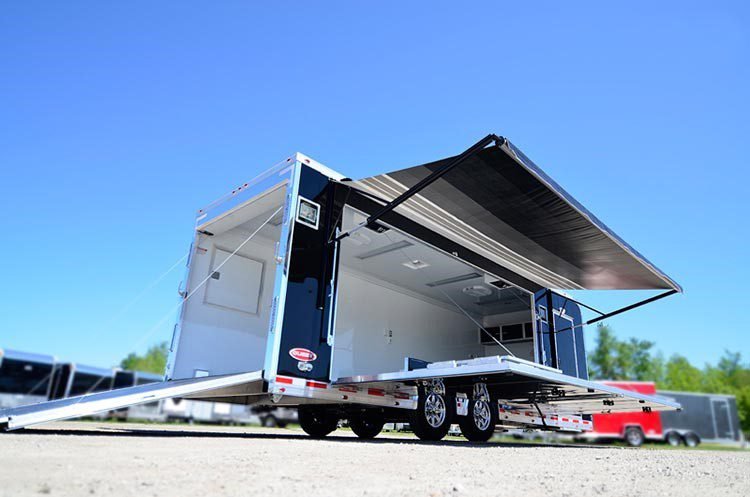Securing the right financing for your small business is crucial for continued growth and success. For established businesses, low-interest small business loans offer an excellent opportunity to access capital while keeping borrowing costs manageable. These loans can be used for various purposes, from expansion to equipment purchases and operational improvements. If you’re an established business owner looking to take advantage of these financing options, this guide will walk you through the benefits, types of loans available, eligibility requirements, and tips for securing the best rates in 2025.
Why Low-Interest Loans Are Important for Established Businesses
As your business grows, you may need capital for various purposes, such as:
- Expanding your operations
- Investing in new technology or equipment
- Hiring additional staff
- Refinancing existing debt
- Managing cash flow during slow seasons
Low-interest loans provide a cost-effective way to borrow money without significantly straining your finances. Since established businesses usually have a proven track record, they are more likely to qualify for better terms, including lower interest rates, compared to startups or businesses with limited credit histories. The lower interest means that over the life of the loan, you’ll pay less in interest, which can free up more capital for reinvestment in your business.
Types of Low-Interest Small Business Loans for Established Businesses
In 2025, there are several types of low-interest small business loans that established businesses can consider. These loans vary based on factors like loan terms, the amount of capital you need, and the purpose of the loan.
1. SBA Loans (Small Business Administration Loans)
SBA loans are one of the best options for established businesses looking for low-interest financing. These loans are partially guaranteed by the government, which reduces the lender’s risk and allows them to offer lower rates to borrowers.
- Types of SBA Loans:
- 7(a) Loan Program: The most popular SBA loan, offering up to $5 million for various business purposes.
- 504 Loan Program: Provides long-term financing for major assets like real estate or equipment.
- Microloan Program: Offers smaller loans (up to $50,000) for working capital or small investments.
Benefits of SBA loans:
- Low-interest rates (typically 6% to 9%)
- Longer repayment terms (up to 25 years)
- Fixed and variable interest rate options
Drawbacks:
- Lengthy application process
- Strict eligibility requirements
2. Term Loans
Term loans are traditional loans from banks or online lenders, where businesses receive a lump sum of money that’s paid back over a set period. The interest rates for term loans are generally lower than for other types of financing, especially for established businesses with good credit histories.
Benefits of term loans:
- Predictable monthly payments
- Fixed or variable interest rates
- Loan amounts that can meet a wide range of business needs
Drawbacks:
- Higher interest rates for businesses with poor credit
- Requires a solid business plan and financial documentation
3. Business Lines of Credit
A business line of credit offers flexible, revolving credit that you can access as needed, similar to a credit card. While the interest rates may not be as low as some traditional loans, they’re still often more affordable than other financing options, and they provide easy access to funds whenever you need them.
Benefits of business lines of credit:
- Flexible access to funds
- Only pay interest on the amount you borrow
- Lower interest rates compared to credit cards
Drawbacks:
- Variable interest rates, which can fluctuate
- Requires a good credit score and strong financial standing
4. Equipment Financing
For established businesses that need to purchase or upgrade equipment, equipment financing can be a great low-interest option. With equipment financing, the equipment you purchase acts as collateral for the loan, which allows lenders to offer lower rates.
Benefits of equipment financing:
- Lower interest rates due to collateral
- Allows you to acquire the equipment you need without large upfront payments
- Tax benefits in some cases (Section 179 of the IRS tax code)
Drawbacks:
- Only suitable for equipment purchases
- Your equipment serves as collateral, so it may be repossessed if you default
5. Online Business Loans
While online lenders may not always offer the lowest interest rates compared to traditional banks, they can still provide competitive rates for established businesses. Online lenders offer faster application processes, which may be ideal if you need capital quickly.
Benefits of online business loans:
- Faster application and approval process
- Easier to qualify for than traditional bank loans
- Potential for lower rates if you have a strong business profile
Drawbacks:
- Higher interest rates compared to SBA loans or traditional bank loans
- Shorter repayment terms, which can lead to higher monthly payments
How to Qualify for Low-Interest Small Business Loans
Qualifying for low-interest loans depends on several factors, particularly your business’s financial health. Here are the key criteria that lenders will consider when assessing your eligibility:
1. Credit Score
Your business’s credit score is one of the most important factors lenders use to determine your interest rate. A higher credit score (typically 700 or above) shows that your business has a strong history of managing debt and is likely to repay the loan on time.
2. Business Revenue
Lenders will also look at your business’s revenue and profitability. A healthy cash flow demonstrates that your business is generating consistent income and can repay the loan.
3. Time in Business
Established businesses with at least two years of operating history are more likely to qualify for lower-interest loans. Lenders view established businesses as less risky than newer ventures.
4. Debt-to-Income Ratio
Lenders will assess your debt-to-income ratio to determine whether your business is already over-leveraged. A lower ratio indicates that your business is in a strong financial position to handle additional debt.
5. Collateral
Offering collateral, such as business assets or personal guarantees, can sometimes help lower the interest rate, as it reduces the lender’s risk.
How to Secure the Best Low-Interest Small Business Loan
Here are some steps to help you secure the best possible loan for your established business:
1. Improve Your Credit Score
If your credit score is below 700, work on improving it before applying for a loan. Pay down outstanding debt, dispute any errors on your credit report, and make timely payments to boost your score.
2. Prepare Your Financial Documentation
Lenders will require a range of financial documents, such as:
- Income statement
- Balance sheet
- Tax returns
- Cash flow statement Make sure these documents are up to date and organized to streamline the application process.
3. Shop Around for the Best Rates
Don’t settle for the first loan offer you receive. Shop around with different lenders, including banks, online lenders, and credit unions, to compare rates and terms.
4. Consider Alternative Lenders
If traditional banks aren’t offering the best rates, consider alternative lenders such as online lenders or credit unions. These lenders may have more flexible terms and quicker application processes.
5. Know Your Loan Purpose
Be clear about the purpose of the loan. Whether it’s for equipment purchase, expansion, or debt refinancing, knowing exactly how you plan to use the funds can help you choose the best loan type and ensure you get the best rate.
Frequently Asked Questions (FAQ)
Q1. What is the lowest interest rate for small business loans in 2025?
- Interest rates for small business loans can range from as low as 4% to 10%, depending on the type of loan, your creditworthiness, and the lender. SBA loans typically offer the lowest rates.
Q2. Can I get a low-interest loan with bad credit?
- While it’s harder to qualify for low-interest loans with bad credit, some lenders may still offer competitive rates for businesses with strong financials, a solid business plan, or collateral.
Q3. How long does it take to get a low-interest small business loan?
- Traditional loans like SBA loans may take several weeks to process, while online loans or lines of credit can be approved in as little as 24-48 hours.
Q4. Are low-interest loans available for startups?
- While low-interest loans are more commonly available to established businesses, some SBA loan programs may offer competitive rates for startups with strong business plans and financials.
Q5. Is collateral required for low-interest small business loans?
- Not all loans require collateral. However, offering collateral can improve your chances of securing a low-interest loan, especially for larger loan amounts.
Low-interest small business loans are an excellent option for established businesses looking to fund growth, purchase new equipment, or refinance existing debt. By choosing the right type of loan, understanding your eligibility, and preparing your financials, you can access affordable financing that will allow you to achieve your business goals without breaking the bank. Be sure to shop around, compare offers, and consult with financial advisors to secure the best loan terms for your business in 2025.




